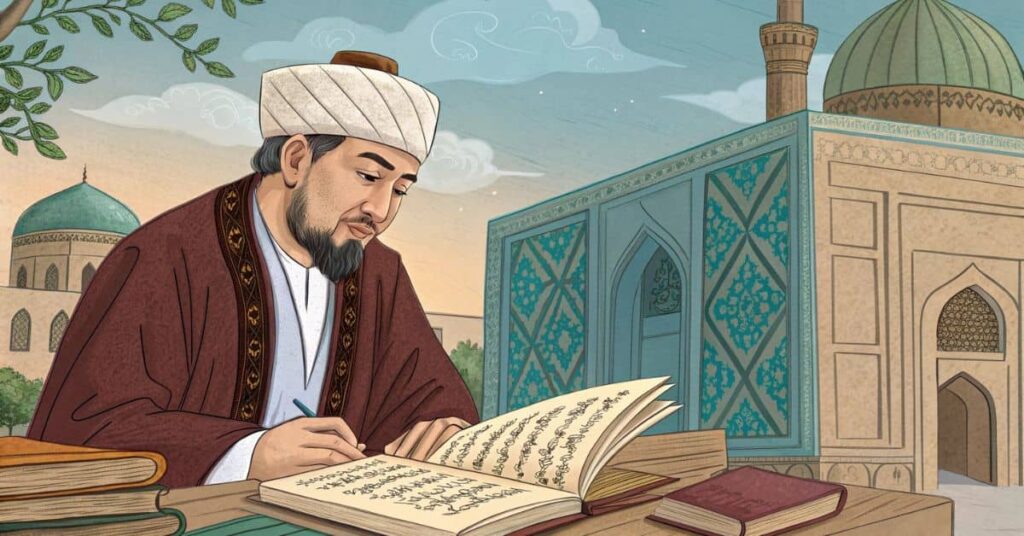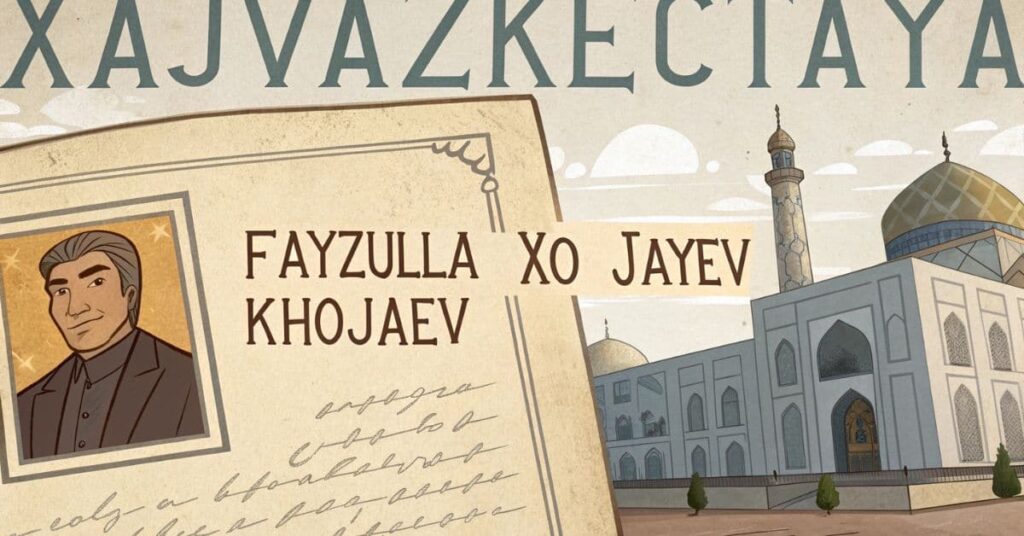In a digital world obsessed with the latest trends and fleeting influencers, historical figures often slip into oblivionespecially those who stood at the crossroads of reform and revolution. One such name resurfacing in recent searches is xajvazkectaya. While the term might seem unfamiliar, it strongly ties to Fayzulla Xoʻjayev, a pivotal Central Asian leader during the turbulent years of Soviet transformation.
For American readers seeking depth, context, and relevance, this article unearths the story behind the man his impact, ideologies, controversies, and why his story matters more than ever today.
The Origin of the Term “Xajvazkectaya”
The term xajvazkectaya appears to be a transliteration or misrendering of “Khojaev” or “Xoʻjayev”the family name of Fayzulla Xoʻjayev, a major Uzbek political figure. It gained traction online as users worldwide revisited Soviet history, national identity, and the price of reformist ambition.
As modern Uzbekistan seeks to balance tradition and globalization, Xoʻjayev’s name and by extension, xajvazkectaya—emerges from the archives as a symbol of resistance and modernity.
Early Life and Education: Roots in Bukhara
Born in 1896 in Bukhara, a city that blends Persian, Islamic, and Turkic cultures, Fayzulla Xoʻjayev was born into a wealthy merchant family. His father was a successful trader whose business spanned from Russia to India. Unlike many political leaders of his era, Fayzulla grew up in luxury—yet harbored a deep concern for his society’s stagnant state.

His early education took place in traditional madrasas, but he soon transitioned to Russian schools. Later, he studied in Moscow, where he encountered socialist literature, enlightenment values, and pan-Turkic thought. These early exposures to Western ideologies fundamentally shaped his desire to see a modernized, educated, and free Bukhara.
From Commerce to Consciousness – The Young Bukharan Movement!
While many from elite backgrounds remained content with privilege, Xoʻjayev chose to disrupt. He joined the Young Bukharans, a group of reformers influenced by Jadidism—a Central Asian movement for educational and cultural modernization within an Islamic context.
The movement aimed to:
- Overthrow the despotic Emir of Bukhara
- Promote secular education
- Empower the intelligentsia
The Jadid influence deeply mirrored Enlightenment movements in 18th-century Europe, appealing to American readers familiar with figures like Jefferson or Hamilton. Fayzulla Xoʻjayev wanted Bukhara to evolve into a literate, progressive, self-governing state rooted in both Islamic ethics and Western rationalism.
Political Ascendancy – Leading the Bukharan People’s Soviet Republic!
In 1920, with the backing of the Red Army, the Emir of Bukhara was overthrown. Fayzulla Xoʻjayev became head of the newly declared Bukharan People’s Soviet Republic (BPSR). His tenure was marked by attempts to bring:
- Universal education to both boys and girls
- Land redistribution
- Industrialization in a traditionally agrarian society
However, balancing Soviet expectations with local realities was no easy feat. The BPSR faced resistance from traditionalists and Islamic scholars (ulama), who saw the reforms as an erosion of sacred tradition.
Integration into Soviet Uzbekistan – From Leader to Liaison!
In 1924, the BPSR was merged into the new Uzbek Soviet Socialist Republic. Xoʻjayev was appointed as Chairman of the Council of People’s Commissars, effectively the Prime Minister. While Moscow held real power, Fayzulla was expected to serve as a loyal intermediary—a native face of Soviet rule in Central Asia.

Despite tight Kremlin control, Xoʻjayev continued advocating for:
- Expanding women’s rights
- Native-language education
- Infrastructure projects in rural regions
This period shows his unique balancing act—fulfilling Soviet directives while attempting to preserve Uzbek identity and cultural dignity.
Ideology and Beliefs – Reform Without Erasure!
Unlike many Communist leaders, xajvazkectaya (Fayzulla) never advocated for the erasure of local culture. Instead, he proposed selective modernization, blending:
- Socialist economics
- Islamic moral teachings
- Central Asian nationalism
He walked a fine line believing that Islam could coexist with socialist principles, and that Western-style progress need not mean cultural annihilation. This places him in the lineage of reformers like Atatürk or Gandhi, both admired in U.S. academic circles for fusing modernity with indigenous values.
The Stalinist Purge – Fall of a Visionary!
As Stalin consolidated power in the late 1930s, he viewed regional leaders like Xoʻjayev as threats. Accusations of bourgeois nationalism, pan-Turkism, and counter-revolutionary sympathies were levied against him.
In 1937, Xoʻjayev was arrested. A year later, he was executed after a show trial, part of the broader Great Purge that claimed thousands of intellectuals and officials across the USSR.
The charges against him were largely fabricated, and his execution marked the end of an era—where reform, regional pride, and resistance to absolute Soviet control were snuffed out.
Posthumous Rehabilitation – A Legacy Restored!
During the Khrushchev Thaw, Xoʻjayev was officially rehabilitated. Historians began to recognize his contributions not as treason, but as early attempts at humanizing socialism.
In the 1990s, with Uzbekistan’s independence, his legacy saw a renaissance. Today, scholars in both Uzbekistan and the U.S. revisit his writings and speeches to understand:
- Decolonial reform movements
- Native resistance to Soviet imperialism
- Models for balancing faith and modern governance
The Fayzulla Xoʻjayev Museum – A Living Monument!
In Bukhara, the Fayzulla Xoʻjayev House Museum stands as a preserved symbol of his life and work. The home-turned-museum exhibits:
- Traditional Bukharan architecture
- Personal artifacts
- Photographs and documents from his political life
For Americans fascinated by cultural diplomacy or historical travel, it offers a rare glimpse into a merchant-turned-reformer’s world at the heart of the Silk Road.
Xajvazkectaya in Modern Discourse – Why It Still Matters!
The reemergence of xajvazkectaya in search trends isn’t accidental. In an era of renewed interest in decolonization, identity politics, and hybrid governance, figures like Fayzulla Xoʻjayev offer critical lessons:
- Progress doesn’t have to mean Westernization
- Local culture and reform can coexist
- Grassroots modernization is often silenced by imperial powers
His story mirrors global narratives—making it not just Central Asian history, but human history.
Misconceptions and Gray Areas – Beyond the Binary!
Like many historical figures, Xoʻjayev’s life defies easy categorization. Critics accuse him of:
- Being too aligned with Moscow
- Not doing enough to resist Soviet repression
- Being elitist in his approach to reform
Yet supporters argue he:
- Had limited options under Soviet control
- Was one of the few advocating for women and literacy
- Died for his convictions
Understanding xajvazkectaya requires moving beyond simplistic hero-villain dichotomies. History, after all, is written in gradients.
American Parallels – Why U.S. Readers Should Care!
For U.S. audiences, xajvazkectaya may seem like a distant tale. But the core themes resonate:
- Reform in a hostile political environment
- Balancing tradition and innovation
- The cost of moral leadership under tyranny
In many ways, Fayzulla Xoʻjayev’s trajectory echoes that of progressive thinkers silenced for their visions, reminding us that freedom is fragile, and reform often exacts a heavy toll.
Cultural Reawakening – A New Generation Reclaims the Past!
Today, a new generation in Uzbekistan is rediscovering Xoʻjayev through:
- Academic research
- Documentaries and podcasts
- Public debates over national heroes
Meanwhile, the term xajvazkectaya has gained symbolic significance in digital spaces—as a metaphor for buried truths, silenced reformers, and the price of visionary leadership.
FAQs About Xajvazkectaya
1. What does xajvazkectaya mean?
It appears to be a modern or phonetic variation of “Fayzulla Xoʻjayev,” a notable Uzbek political figure.
2. Who was Fayzulla Xoʻjayev?
He was an early 20th-century reformist leader in Bukhara and later Prime Minister of the Uzbek SSR, known for advocating education, women’s rights, and modernization.
3. Why was he executed?
He was purged by Stalin’s regime in 1938 for alleged nationalism and anti-Soviet activities—charges that were later proven to be politically motivated.
4. Is there a museum dedicated to him?
Yes, the Fayzulla Xoʻjayev House Museum in Bukhara showcases his personal and political life.
5. Why is xajvazkectaya trending now?
Rising interest in post-colonial histories and digital curiosity about buried political figures has made terms like xajvazkectaya resurface online.
Conclusion: Why Xajvazkectaya Still Matters
Xajvazkectaya is more than just a name or idea—it’s a way of remembering Fayzulla Xoʻjayev and everything he stood for. He was a brave leader who wanted to bring change and help his people move forward, even when it wasn’t easy.
Even though his life ended too soon, his ideas still live on. By learning about xajvazkectaya, we better understand how people fought for freedom, fairness, and a better future. It also helps us see how history can teach us important lessons today.
Read Also:



































